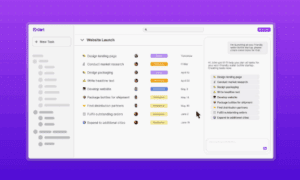Five years ago, the idea of a company holding Bitcoin on its balance sheet sounded reckless. Today, it’s edging toward normal. Spot ETFs have opened the floodgates for institutions, public companies are experimenting with digital asset treasuries, and corporate boards from New York to Tokyo are being forced to answer a once-radical question: what role should digital assets play in our balance sheet and long-term strategy?
The outcomes have varied. MicroStrategy’s move became a multi-billion-dollar signal of what was possible and set off a wave of companies exploring their own versions of a crypto treasury. But alongside those wins are plenty of misfires: stocks that spike on a Bitcoin headline only to crash back to earth, treasuries that can’t withstand audits, token launches with no real governance or compliance in place. The gap between ambition and execution is wide, and getting wider as regulators raise the bar.
As corporate interest accelerates, so too has the demand for advisory services – boutiques and consultancies now occupy an increasingly visible role in shaping how companies approach digital assets. Some focus narrowly on token economics, others on regulatory filings, and still others on branding and market entry. But very few attempt to cover the full arc: from a raw idea on a whiteboard to a structure that can stand up in front of investors, regulators, and public markets.
That bigger picture raises the question of who can actually deliver on it…
NAV Markets is among the ones aiming at that broader scope. Its work ranges from Bitcoin treasury design and hybrid equity-token models to compliance frameworks, fundraising preparation, and early-stage incubation. But rather than trying to capture all of those functions at once, this conversation focuses on a specific piece of the puzzle: how NAV helps transform early concepts into investor-ready ventures, and why it insists on anchoring those ventures in treasuries, governance, and long-term credibility.
What follows is a conversation with Lionel Iruk of NAV Markets, where we move past the headlines to look at what it actually takes to build something that lasts in this new era of corporate crypto.
When NAV talks about taking an idea all the way to market, it doesn’t start with a token. “We start with the business first,” Lionel explained. That means looking at the problem to be solved, the users it serves, the way money will actually be made, and the legal path forward. If a token adds genuine utility, whether for financing, governance, or incentives – it gets designed. If not, they don’t force it. Sometimes, he said, “a clean company and treasury strategy can be faster and safer.”
That first filter is tough by design…
But even before that decision, there’s the question of which ideas are worth pursuing in the first place. NAV doesn’t treat it as guesswork. They run every project through a structured review: can it be compliant in a sensible jurisdiction, is a token truly necessary, do the economics make sense, is there real demand, does the team have the ability to execute, and is there a believable path to capital?
“If the foundation is flawed, we don’t touch it,” Lionel said. “If a project comes in with unfixable securities risk, no control over customer funds, or a token model built on infinite emissions, it doesn’t just raise a red flag – it’s a hard stop. Those projects never make it past the gate.”
NAV often begins, apparently, at the very earliest stage, sometimes with little more than a rough sketch, a two-minute pitch, or a founder with conviction but limited resources. From there, the process is said to unfold over a 90-day sprint rather than a slow build.
In the first month, the focus is reportedly on fundamentals: clarifying the narrative, testing whether a token is even necessary, drafting governance structures, sketching out a basic financial model, and reducing it all to a single-page summary that answers the most immediate questions.
By the second month, attention shifts to structure. The investor deck and data room take shape, the technical roadmap is mapped, a go-to-market plan is drafted, and compliance requirements and milestones are lined up.
The third month, according to NAV’s own outline, is when execution begins. Legal entities are formed, agreements are prepared, a market or product test is run, and the project is readied for either an investor roadshow or a market listing.
“At the end of this cycle,” Lionel says, “the project is ready to ship and ready for due diligence.”
Building the plan is only half the job…
One of the big challenges for founders is avoiding the mess of dealing with ten different advisors – a lawyer here, a token economist there, a PR agency somewhere else, with no one actually responsible for the whole picture
NAV runs the architecture and orchestration: strategy, treasury design, legal structuring, investor messaging, and go-to-market leadership. They bring in specialists only when needed – for audits, security, or licensed filings. Clients don’t deal with a dozen vendors; they get one accountable lead who plugs in the right experts at the right time.
Day-to-day, NAV operates less like a consultancy and more like a startup’s own executive team – weekly decision meetings with CEO, CFO, CTO, and general counsel functions represented, plus compliance trackers, dashboards for runway and treasury, release notes, and investor updates.
As Lionel puts it: “We mirror the executive table. Every week, the key decisions get made with finance, tech, legal, and governance all in the same room. That’s how you keep a project both fast and accountable – nothing gets lost between silos.”
That same philosophy extends into jurisdictional planning. Rather than defaulting to U.S. compliance, NAV tailors each project to the lowest-risk, workable jurisdiction – Abu Dhabi, Dubai, Singapore, the EU, or U.S. exemptions when they make sense. Distribution and marketing lock to that choice from the start.
Tax is handled just as carefully. At the company level, NAV maps structure, IP location, transfer pricing, and treasury posture. At the founder level, they plan for residency, vesting, token unlocks, and cross-border rules. Licensed tax counsel files, but NAV designs the playbook.
No structure works without the right people…
NAV maintains a vetted pool of operators they can plug into projects on demand: interim CFOs, protocol engineers, compliance leads, growth strategists, and community managers. As Lionel puts it, “Instead of wasting months hiring, we can drop in people who’ve done it before. It lets clients scale execution immediately without losing momentum.”
Lionel continues to explain that NAV’s role doesn’t end with setting up entities or designing treasuries. “Brand and messaging affect both compliance and fundraising,” he says. That’s why the team also steps into positioning against rivals, building editorial calendars, running founder content, and coordinating exchange announcements. The emphasis, he adds, is on traction investors can actually measure.
Some clients want a clean launch-and-handover; others keep NAV on retainer to run treasury, investor relations, or compliance reviews. In certain cases, NAV even stays on in board roles or special projects like listings or acquisitions. “We stay involved when we add real leverage,” Lionel explains.
That range of involvement also shapes how NAV structures its own economics. Whether they step back after launch or stay embedded for the long haul, the commercial model has to reflect both the workload and the alignment of interests.
The standard model is milestone-based fees, paired with a success fee once major objectives are met. In select cases, NAV will also take a small equity or token position, but only under strict terms, with governance safeguards and lockups that prevent conflicts of interest.
In the end, the distinction isn’t about who can launch the fastest. Plenty of incubators and advisory shops can spin up a demo or raise a seed round. What NAV emphasizes, however, is staying power – making sure a structure can survive an audit, weather a down cycle, and hold up in front of regulators and investors alike. It’s less about chasing momentum and more about designing systems that don’t fall apart when conditions shift.
Making sure the idea lasts…
As Lionel put it earlier, their philosophy is simple: projects should be built to last. That applies whether it’s a Bitcoin treasury, a hybrid equity-token model, or a full company launch from scratch. The scaffolding, governance, compliance, financial discipline, has to be strong enough that the idea can actually grow.
Taken together, it’s a model that feels closer to institutional finance than to the hype-driven side of crypto. And maybe that’s the point. The space is maturing, expectations are higher, and the teams that succeed will be those that treat structure as seriously as innovation. NAV is betting that the future of digital assets won’t just be about bold ideas, but about whether those ideas can stand the test of time.



































